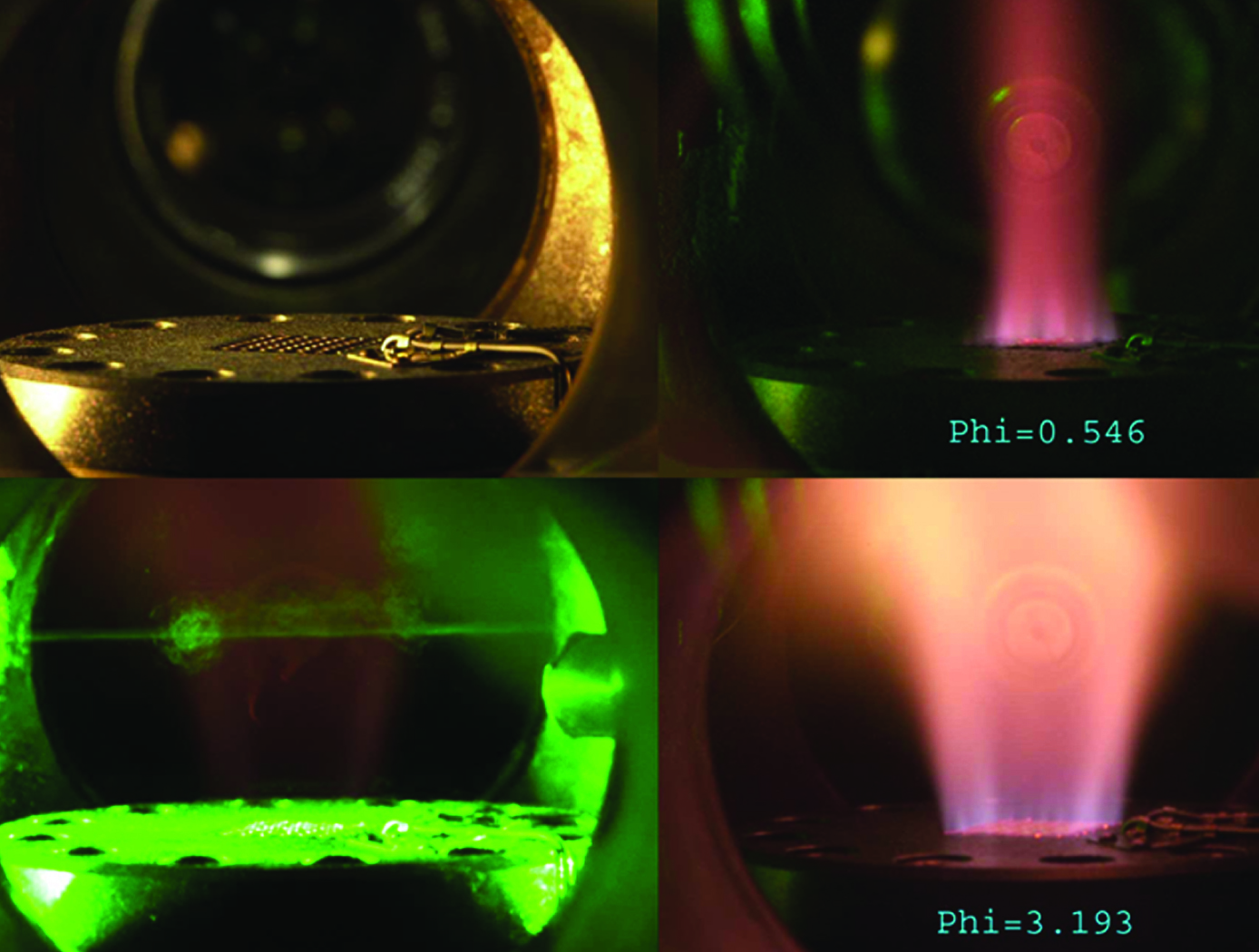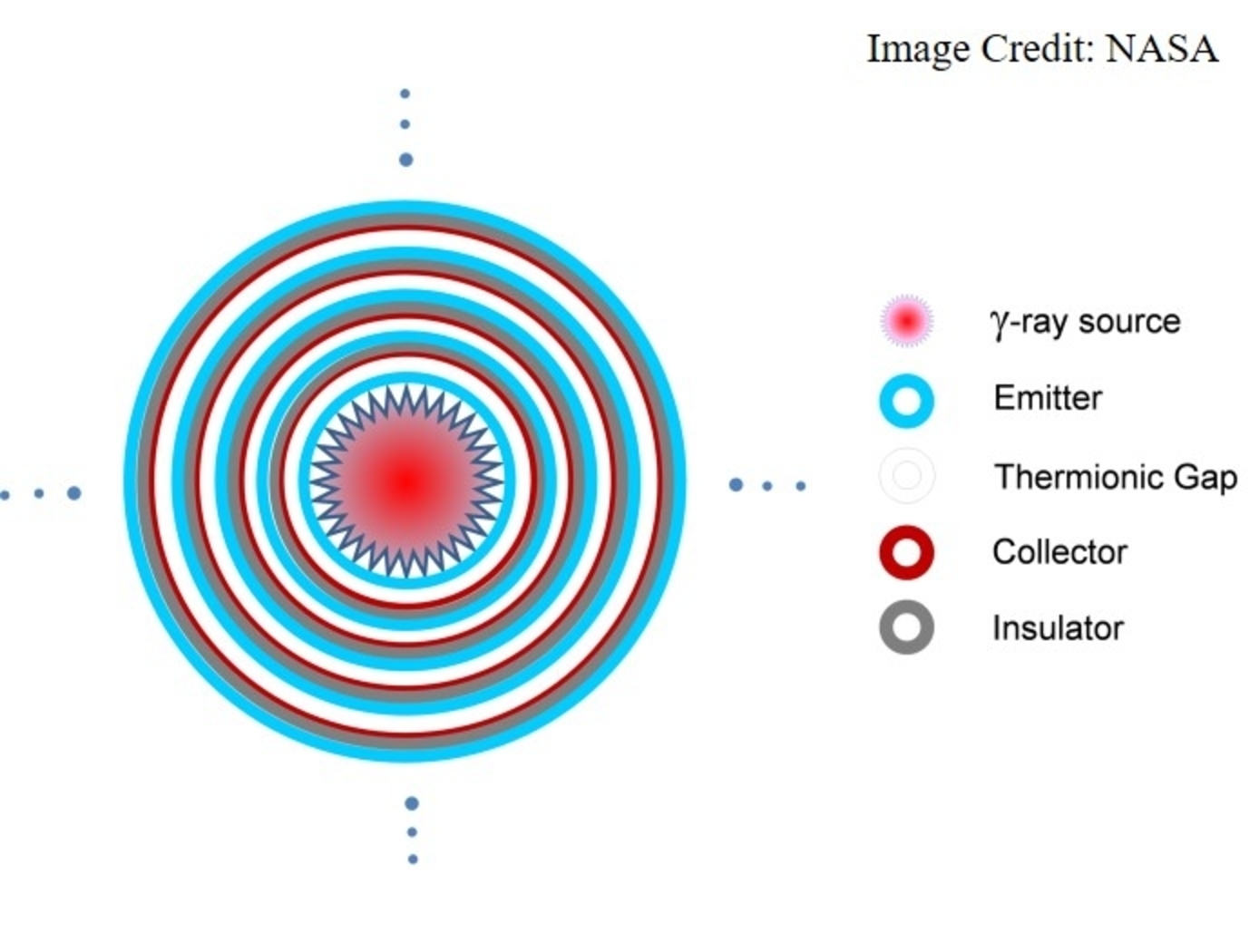Search
PATENT PORTFOLIO
Power Generation and Storage
NASA has developed a range of new technologies to meet the unique power needs of NASA's spacecraft, aircraft, and other aerospace systems. These technologies have the potential to be applied in a variety of commercial and industrial settings. From solar panels and fuel cells to advanced batteries and capacitors, NASA's power generation and storage technologies offer innovative solutions for a wide range of power-related challenges.

Optimum Solar Conversion Cell Configurations
A solar cell manufactured from this new optical fiber has photovoltaic (PV) material integrated into the fiber to enable electricity generation from unused light, including non-visible portions of the spectrum and visible light not transmitted to a lighting application. These new solar cells are based around cylindrical optical fibers, providing two distinct advantages over the flat panels that lead to increased efficiency. The core fiber, used to transmit light, can be adjusted to increase or decrease the amount of available light that is transmitted to the lighting application at any point in real time. This invention can be applied wherever optical concentrators are used to collect and redirect incident light. Wavelengths as large as 780 nanometers (nm) can be used to drive the conversion process. This technology has very low operating costs and environmental impacts (in particular, no greenhouse gas emissions). The fiber uses low-cost polymer materials. It is lightweight and flexible, and can be manufactured using low-cost solution processing techniques. Such multifunctional materials have great potential for the future of solar and photovoltaic devices. They will enable new devices that are small and lightweight that can be used without connection to existing electrical grids.

Double-Fed Induction Linear Alternator
This technology was developed to address the limitations of traditional, single-fed linear alternators, which require permanent magnets, adhesive bonding organics, and heavy iron laminations for flux control. They experience eddy-current losses and require electromagnetic interference protection. Furthermore, they have a limited operational temperature range (only up to 250°C), which typically declines to below 200°C as the adhesive bonding organics outgas and degrade over time. Consequently, they are limited to approximately 93% efficiency at ambient temperatures.
Glenn's novel linear alternator addresses all of the limitations of its predecessors and engenders a number of desirable new qualities - notably the ability to reduce eddy-current losses by 25% and operate at 99% efficiency at temperatures up to 950°C. It features a concentric, additively manufactured monolithic copper plunger and stator. The stator is a stationary single copper Halbach array, whereas the plunger is a moving electromagnetic copper Halbach array. A direct current is delivered through the conductive piston flexure support, which also provides reactive power for resonance. It creates a fixed magnetic field similar to that of a permanent magnet, but the magnetic field is channeled inward by the Halbach mover, doubling its strength. By utilizing standard double-fed induction control methods, the reactive power can be transferred and adjusted between both coils. This maximizes system efficiency and minimizes weight. This innovative technology will enable a new class of vastly superior linear alternators with the ability to operate at extreme temperatures with increased performance and efficiency. This is an early-stage technology requiring additional development. Glenn welcomes co-development opportunities.

Premixed, High-Pressure, Multi-Fuel Burner
NASA Glenn's fully premixed burner design accomplishes the rapid mixing of the fuel and air flows while simultaneously providing backside impingement cooling to the burner face. This novel burner technology has been demonstrated to operate on hydrogen-air mixtures at pressures up to 30 bar, and at equivalence ratios (Phi) ranging from 0.15 to 5.0, but typically at equivalence ratios below 0.6 or above 2.0 for extended periods of time. It has also been demonstrated to work well with hydrogen-carbon monoxide fuel mixtures in a 1:1 mixture (by volume). The design provides a uniform zone of combustion products and temperatures, and is able to achieve complete and rapid mixing of the reactant gases over a distance as short as 5 mm, with the combustion products attaining a fully-reacted state within about 10 mm downstream of the burner face. Effectiveness of the mixing is not dependent on the use of hydrogen gas, therefore the system works well for other gaseous fuels such as methane, propane, or natural gas, in a fully premixed mode.
The design of the Glenn's burner is simple and straightforward to manufacture using conventional techniques. The modular design of the burner lends itself to scalability for larger power output applications. This burner is simple to operate and is robust for use in an industrial setting such as low-emissions stationary gas turbine engine, or for aircraft gas turbine engines.

Double-Acting Extremely Light Thermo-Acoustic (DELTA) Convertor
Glenn's innovative DELTA convertor uses a double-action push/pull piston, in which an acoustic wave - or sound wave generated by heat - pushes both ends of a single piston. When sound waves are propagated down a narrow tube, they transfer energy along the tube. Conversely, when a heat gradient is introduced, it will generate sound waves that will cause the push/pull piston to oscillate. Using thermoacoustics to oscillate the push/pull piston simplifies engine operation by eliminating moving parts such as hot displacers and heavy springs. The double-action piston is contained by multiple thermo-acoustic stages in series that form a delta-shaped triangular loop. One side of the piston creates an acoustic wave while simultaneously receiving acoustic power on the opposing side, enabling increased power on the single piston as compared to a single-action piston. The simple design consists of a helium-filled tube, heat exchangers, regenerators, and a single, non-contact, oscillating piston. Operating at 400Hz, this convertor can produce four times more power than conventional engines operating at 100Hz, with no hot moving parts, maintenance, lubrication, or electric feedback required. At this higher frequency, the output current is minimized and the specific power is maximized enabling an order of magnitude increase in specific power over conventional engines. Glenn's novel DELTA convertor offers this significantly increased specific power in a compact, lightweight, maintenance-free package that has considerable commercial potential.

High-Efficiency Solar Cell
This NASA Glenn innovation is a novel multi-junction photovoltaic cell constructed using selenium as a bonding material sandwiched between a thin film multi-junction wafer and a silicon substrate wafer, enabling higher efficiencies. A multi-junction photovoltaic cell differs from a single junction cell in that it has multiple sub-cells (p-n junctions) and can convert more of the sun's energy into electricity as the light passes through each layer. To further improve the efficiencies, this cell has three junctions, where the top wafer is made from high solar energy absorbing materials that form a two-junction cell made from the III-V semiconductor family, and the bottom substrate remains as a simple silicon wafer. The selenium interlayer is applied between the top and bottom wafers, then pressure annealed at 221°C (the melting temperature of selenium), then cooled. The selenium interlayer acts as a connective layer between the top cell that absorbs the short-wavelength light and the bottom silicon-based cell that absorbs the longer wavelengths. The three-junction solar cell manufactured using selenium as the transparent interlayer has a higher efficiency, converting more than twice the energy into electricity than traditional cells. To obtain even higher efficiencies of over 40%, both the top and bottom layers can be multi-junction solar cells with the selenium layer sandwiched in between. The resultant high performance multi-junction photovoltaic cell with the selenium interlayer provides more power per unit area while utilizing a low-cost silicon-based substrate. This unprecedented combination of increased efficiency and cost savings has considerable commercial potential.
This is an early-stage technology requiring additional development. Glenn welcomes co-development opportunities.

Solar Powered Carbon Dioxide (CO2) Conversion
This technology consists of a photoelectrochemical cell composed of thin metal oxide films. It uses sunlight (primarily the ultraviolet (UV), visible and Infrared (IR) portions)) and inexpensive titanium dioxide composites to perform the reaction. The device can be used to capture carbon dioxide produced in industrial processes before it is emitted to the atmosphere and convert it to a useful fuel such as methane. These devices can be deployed to the commercial market with low manufacturing and materials costs. They can be made extremely compact and efficient and used in sensor and detector applications.

Battery Charge Equalizer System
The innovation consists of a transformer array connected to a battery array through rectification and filtering circuits. The transformer array is connected to a drive circuit and a timing and control circuit, which enables individual battery cells or cell banks to be charged. The timing and control circuit connects to a charge controller that uses battery instrumentation to determine which battery bank to charge. The system is ultra lightweight because it uses much fewer than one transformer per battery cell. For instance, 40 battery cells can be balanced with an array of just five transformers. The innovation can charge an individual cell bank at the same time while the main battery charger is charging the high-voltage battery system.
Conventional equalization techniques require complex and costly electrical circuitry to achieve cell monitoring and balancing. Further, such techniques waste the energy from the most charged cells through a dummy resistive load (regulator), which is inefficient and generates excess heat. In contrast, this system equalizes battery strings by selectively charging cells that need it. The technology maintains battery state-of-charge to improve battery life and performance. In addition, the technology provides a fail-safe operation and a novel built-in electrical isolation for the main charge circuit, further improving the safety of high-voltage Li-ion batteries.

Battery Management System
The technology is comprised of a simple and reliable circuit that detects a single bad cell within a battery pack of hundreds of cells and it can monitor and balance the charge of individual cells in series. NASA's BMS is cost effective and can enhance safety and extend the life of critical battery systems, including high-voltage Li-ion batteries that are used in electric vehicles and other next-generation renewable energy applications.
The BMS uses saturating transformers in a matrix arrangement to monitor cell voltage and balance the charge of individual battery cells that are in series within a battery string. The system includes a monitoring array and a voltage sensing and balancing system that integrates simply and efficiently with the battery cell array, limiting the number of pins and the complexity of circuitry in the battery. The arrangement has inherent galvanic isolation, low cell leakage currents, and allows a single bad or imbalanced cell in a series of several hundred to be identified. Cell balancing in multi-cell battery strings compensates for weaker cells by equalizing the charge on all the cells in the chain, thus extending battery life. Voltage sensing helps avoid damage from over-voltage that can occur during charging and from under-voltage that can occur through excessive discharging.

Multi-Layer Nuclear Thermionic Avalanche Cell
The Multi-Layer NTAC is comprised of a gamma-ray source and various layers of emitters, collectors, and insulators. Ideal emitter materials include elements with high atomic numbers, while ideal collector and insulator materials include elements with low atomic numbers. A high-energy gamma-ray (tens of keV to MeV) is used to liberate a large number of intra-band, inner-shell electrons from atoms within the emitter material for power generation through the primary interactions of photoelectric, Compton scattering, photonuclear, and electron/positron pair production processes. Secondary and tertiary electrons are liberated in the avalanche process as well. If a power conversion process effectively utilizes all liberated electrons in an avalanche mode through a power conversion circuit, the power output is drastically increased. Because power conversion is determined by the absorption rate of high energy photons, increasing power output requires either thicker collector material or a sufficient number of layer structures to capture the high energy photons, leaving no liberated electrons escaping (i.e., minimizing the leak of radioactive rays). The selection of materials, the thicknesses of the emitter, collector, and insulator, as well as the number of NTAC layers required are all determined by the energy of photon source. The thermal energy from radioactive decay can also be converted to electricity using a thermoelectric device to further increase power output. The Multi-Layer NTAC technology can be manufactured using existing semiconductor fabrication technology and can be tailored for small-to-large scale power needs, including kilowatt and megawatt applications.
View more patents



